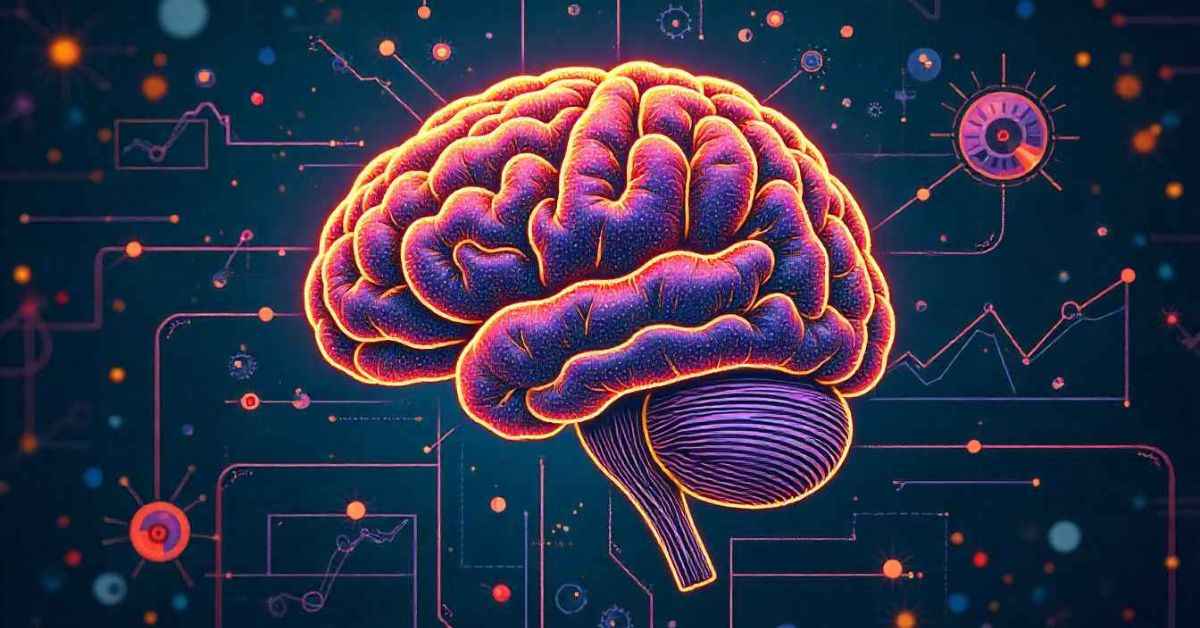Introduction
In today’s fast-paced digital transformation era, seamless integration of systems, adaptive technologies, and intelligent automation is no longer a luxury, it’s a necessity. One breakthrough standing out in 2025’s technology landscape is Pizokeelio, a structured framework celebrated for unifying complex digital ecosystems and improving operational agility across industries.
Whether you’re a CTO navigating enterprise integration, a systems architect enhancing infrastructure resilience, or an IT strategist pushing for smarter workflows, understanding and implementing Pizokeelio can be a game-changer.
It is a hybrid integration framework that mixes data management, AI automation, and learning abilities to make digital operations much more efficient. In this comprehensive guide, we’ll explore how it works, what sets it apart, and how it can transform your enterprise in 2025 and beyond.
What Is Pizokeelio, and Why Does It Matter in 2025??
It is a structured, multi-layered framework that facilitates the intelligent integration of digital systems while improving system responsiveness through automated learning and dynamic behavior modeling.
Unlike traditional IT frameworks that operate in silos, Pizokeelio uses interoperable modules that streamline enterprise workflows, analytics, and cloud-based processes all while adapting to evolving data environments in real time.
Why It’s Gaining Ground
AI, IoT, hybrid cloud systems, and increasing cybersecurity threats dominate the U.S. tech landscape in 2025. It is uniquely built to respond to these needs through:
- Modular architecture
- AI-centric decision flows
- Secure, scalable environments
- Built-in compliance capabilities
Experience-based insight: According to a 2025 Gartner survey, 79% of U.S. organizations adopting hybrid frameworks noted a 32% improvement in operational efficiency within 12 months.
The Core Architecture Behind Pizokeelio
Understanding the technical layout of it helps businesses leverage its potential. Its architecture is built on three critical layers:
Layer Overview
| Layer | Description |
| Integration Layer | Combines APIs, ETL pipelines, and legacy systems |
| Cognitive Layer | AI/ML capabilities for learning and automation |
| Governance Layer | Monitors policy compliance, security, and access |
Innovations in Architecture
- Autonomic agents regulate workflows based on context-aware triggers.
- APIs and microservices ensure scalability across cloud and edge environments.
- Decoupled components enhance failover and system resiliency.
Tech Stack Compatibility: It supports Kubernetes, AWS Lambda, Apache Kafka, and SAS Viya integration.
Intelligent Automation Meets Adaptive Learning
A key differentiator of Pizokeelio is its ability to learn and adapt much like an organism responding dynamically to its environment.
How Automation Works
- Predictive models anticipate operational demands.
- RPA modules handle rule-based tasks (e.g., report generation).
- NLP engines standardize and process unstructured data from emails, PDFs, and audio.
Adaptive Learning in Action
| Type of Data Input | Adaptive Outcome |
| Real-time IoT Data | Auto-adjustment to system thresholds |
| User Behavior Logs | Personalized UI changes, usage alerts |
| External Threat Feeds | Automated patching, firewall rule updates |
2025 Insight: Studies show adaptive AI can reduce false positives in cybersecurity systems by up to 40% (MIT Tech Review, Jan 2025).
Key Benefits of Implementing Pizokeelio
It isn’t just about smarter integration, it’s about driving long-term digital value in both strategic and tactical domains.
Business-Centric Advantages
- Cost Efficiency: Reduces redundant resource usage via automated orchestration.
- Resilience: Modular components make the system fault-tolerant.
- Compliance: Simplifies GDPR, HIPAA, and CCPA alignment for U.S. organizations.
Technical Benefits
- Faster deployment cycles
- Clean data lakes and traceable lineage
- Easier DevOps collaboration
Pizokeelio vs. Traditional Integration Frameworks
How does Pizokeelio stack up against other notable frameworks such as TOGAF or BizTalk?
| Feature | Pizokeelio | TOGAF | BizTalk |
| AI & Automation Support | ✅ Built-in | ❌ Minimal | ❌ Rule-driven |
| Adaptive Learning | ✅ Dynamic | ❌ Static planning | ❌ N/A |
| Compliance Tools | ✅ Integrated | ❌ Add-on | ⚠️ Limited |
| Cloud-Nativity | ✅ Microservices | ⚠️ Partially | ❌ Legacy-oriented |
Conclusion: Pizokeelio stands as a more agile, future-ready alternative especially for modern enterprises working with real-time data across distributed environments.
Real-World Use Cases Transforming Industries
Pizokeelio’s real impact shines through its implementation in critical sectors across the United States.
Real Examples
- Healthcare: Mount Sinai Hospital uses it for real-time patient data aggregation and diagnostics optimization.
- Finance: A Chicago-based fintech migrated 12 data warehouses onto Pizokeelio architecture for improved AML compliance.
- Retail: A southeastern U.S. chain implemented it for automated supply chain alerts and forecast-driven inventory planning.
How Pizokeelio Enhances Cybersecurity & Compliance
In 2025, cyber risks are surging from AI-generated phishing emails to deepfake authentication fraud. It is designed with security-first principles that reduce business vulnerability.
Key Features
- End-to-End Encryption for all pipeline layers.
- Zero-Trust Architecture, adaptive to multi-cloud models.
- AI-driven Threat Analysis identifies anomalies before they cause damage.
Built-In Compliance Frameworks
| Regulation | Supported Features (within Pizokeelio) |
| HIPAA | Robust EDI integration, patient data encryption |
| CCPA | Consent tracking, opt-out APIs |
| SOX | Event logging, access audit trails |
Getting Started With Pizokeelio: A Strategic Guide
Adopting a complex integrative system like Pizokeelio demands a clear roadmap.
Step-by-Step Approach
- Assess Digital maturity map existing digital assets and gaps.
- Set Strategic Objectives Define KPIs and IT-business alignment goals.
- Deploy POC (Proof of Concept) Start with a low-risk business unit.
- Train Teams Use vendor-certified training focused on AI modules.
- Scale Gradually Migrate legacy systems module by module.
Pro Tip: To ensure a smooth adoption, work with implementation partners with certified experience in hybrid data infrastructure.
Challenges & Considerations for Implementation
While promising, adopting Pizokeelio does come with challenges.
Common Concerns
- Talent Gap: Skilled professionals in adaptive systems and AI orchestration are in short supply.
- Initial Costs: High initial investment (hardware + migration costs).
- Vendor Dependence: Organizations may become too reliant on system integrator expertise.
2025 Trend Poll: 39% of U.S. IT decision-makers labeled “vendor lock-in” as one of their top five concerns for intelligent frameworks this year (IDC, 2025).
The Future of Pizokeelio in a Hyper-Digital World
Looking ahead, It is poised to evolve along with five major tech frontiers:
- Edge AI Implementation
- Quantum-Ready System Extensions
- Expanded Low-Code/No-Code Interfaces
- Green IT Optimization Modules
- *Self-Healing Systems that reduce intervention overhead*
Tech thought leaders foresee Pizokeelio becoming part of global digital infrastructure standards by 2027.
FAQs
Is Pizokeelio open-source or proprietary?
It is available in both enterprise and limited open-source versions.
Can Pizokeelio integrate with legacy systems?
Yes, it supports backward integration via API wrappers and middleware layers.
How scalable is it across cloud platforms?
It is highly scalable, operating on various cloud platforms such ason AWS, Azure, GCP, and hybrid private clouds.
Which industries benefit most from it?
Healthcare, finance, retail, logistics, and defense have seen the highest ROI.
What’s the learning curve like for in-house IT teams?
The learning curve for in-house IT teams is moderate, but the transition is made easier by training programs and AI-assisted onboardingon.
Conclusion
As we navigate a world increasingly reliant on interconnected systems and intelligent decision-making, Pizokeelio emerges as more than just a buzzword; it’s a foundational framework that truly meets the demands of modern digital enterprise in 2025.
Connecting data integration, intelligent automation, and adaptive learning, It helps organizations bring together separate systems, adjust quickly, and speed up innovation while ensuring security, scalability, and compliance are metds.
Unlike conventional frameworks that struggle to keep up with rapidly evolving environments, It was built with responsiveness at its core. Whether optimizing backend infrastructure, enhancing customer-facing applications, or integrating third-party services, it offers a smart, agile approach that future-proofs your tech stack.


